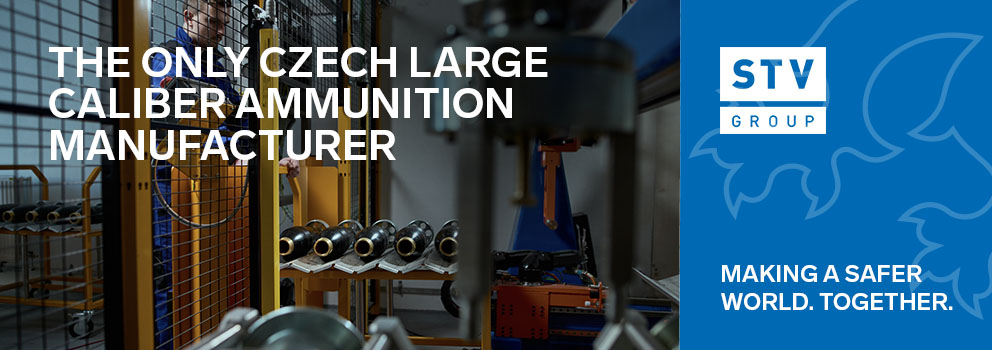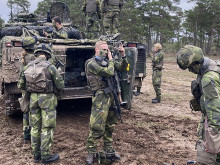Another potential aspect of the military revolution: Nanotechnology as a key element of NATO's future
Nanotechnology, a field that deals with the manipulation of matter at the atomic and molecular level, is revolutionizing the military world. The North Atlantic Treaty Organization (NATO) is intensively exploring the potential of these miniature technologies to strengthen the defence capabilities of its member states. From improved protective materials to advanced sensors and new medical treatments, nanotechnologies promise to transform military capabilities in fundamental ways. However, their deployment also raises a number of security and ethical concerns.

At a time of rising geopolitical tensions and rapid technological advancements, NATO faces a fundamental question: how can it keep pace with the rapidly evolving environment of modern warfare? The answer may lie in an area so small that it cannot be seen with the naked eye, but so powerful that it can change the very nature of military operations. This is nanotechnology – a science that deals with manipulating matter at the atomic and molecular levels.
From science fiction to reality: the evolution of nanotechnology in the military
Nanotechnology, which operates with materials from 1 to 100 nanometers in size, has become a key element of military research and development in recent decades. This technology, working at the atomic and molecular levels, enables the creation of materials and systems with unprecedented properties. In a military context, this means the potential to develop lighter, more durable armor, ultra-sensitive sensors for detecting chemical and biological threats, and advanced systems for camouflage and concealment. For instance, carbon nanotube nanofibers, which are up to 100 times stronger than steel at a fraction of its weight, have the potential to fundamentally change the design of military vehicles and personal protection for soldiers.
Military applications of nanotechnology range from improved materials for soldiers' personal protection to sophisticated sensors capable of detecting chemical and biological threats. As a key player in international security, NATO has devoted considerable effort to researching and developing these technologies to maintain technological superiority over potential adversaries.
Key areas of application of nanotechnology in the NATO military
1. Protective systems and materials
One of the most promising applications of nanotechnology in the military is the development of advanced protective materials. Nanostructures enable the creation of lightweight yet extremely durable materials that can be used to make body armor, helmets, and other protective items.
NATO is investing in research on "smart textiles" that can change their properties depending on environmental conditions. These materials can, for example, increase their impact stiffness, provide thermal regulation, or even monitor a soldier's vital signs.
2. Sensors and detection systems
Nanotechnology allows for the development of extremely sensitive and miniature sensors capable of detecting a wide range of chemical, biological, and explosive substances. These sensors can be integrated into soldiers' equipment or deployed in the field as part of complex early warning systems.
For example, gold nanoparticles can be modified to react to the presence of specific toxins by changing color, allowing for rapid visual detection of dangerous substances. The Alliance is actively supporting the development of these technologies to enhance the ability to quickly identify and respond to CBRN (chemical, biological, radiological, and nuclear) threats.
3. Communication and information technologies
In the field of communications, nanotechnologies contribute to the development of miniature, energy-efficient, and high-performance electronic components. This enables the creation of sophisticated communication networks that are more resistant to interference and harder to detect by adversaries.
Quantum dots and other nanostructured materials are being explored for the development of a new generation of displays and imaging devices with higher resolution and lower power consumption. These technologies can significantly improve soldiers' situational awareness in the field and enhance command and control effectiveness.
4. Energy systems
Nanotechnology plays a key role in the development of advanced energy systems. Nanostructured materials enable the creation of lighter and more powerful batteries and fuel cells, which are critical for increasing the mobility and endurance of soldiers and military equipment.
NATO is focusing research on nanostructured solar cells that can be integrated into uniforms and equipment, providing a source of power in the field. These technologies have the potential to significantly reduce the logistical burden associated with energy supply during operations.
5. Medical applications
In the field of military medicine, nanotechnology opens up new possibilities for treating injuries and diseases. Nanoparticles can be used to target drug delivery, speed up wound healing, or even create "smart" bandages that monitor the condition of a wound and release antibiotics as needed.
The Alliance is investing in research into nanorobots that could, in the future, be used for internal diagnosis and treatment of wounds directly on the battlefield, which could dramatically increase the chances of survival for severely wounded soldiers.
Ethical and security aspects
While the potential of nanotechnology in the military is enormous, its development and deployment raise a number of ethical and security issues that NATO must carefully consider:
- Proliferation control: It is essential to establish strict international control mechanisms and protocols for the development, production, and distribution of advanced nanotechnologies to prevent their proliferation into the hands of terrorist groups or hostile states.
- Environmental impacts: The long-term effects of nanomaterials on the environment and human health must be thoroughly investigated and monitored. A comprehensive system of risk assessment and safety measures for the use and disposal of nanomaterials needs to be put in place.
- Autonomous systems: The use of nanotechnologies in autonomous weapon systems should be strictly regulated by international agreements. It is crucial to ensure that the decision to use force always remains under direct human control, with clear accountability protocols.
- Privacy and surveillance: A robust legal and ethical framework is needed to balance the potential of nanotechnology for surveillance and intelligence gathering with the right to privacy. This framework should include clear rules for the use of nanotechnologies in security and intelligence, with an emphasis on protecting civil rights.
- Asymmetric warfare: Military and security forces should develop comprehensive strategies and countermeasures for the potential misuse of nanotechnology in asymmetric conflicts. This includes the development of detection systems, protective measures, and tactics to counter nanotechnology-based threats.
NATO is aware of these challenges and actively participates in international dialogue on the ethical use of nanotechnology in the military. The Alliance emphasizes the need for transparency in research and development and supports the creation of international norms and standards for these technologies.
The Future of Nanotechnology in NATO
The future of nanotechnology in the armies of NATO member states is extremely promising but also full of challenges. The Alliance will have to balance the need for technological superiority with a responsible approach to the development and deployment of these advanced technologies.
Key areas that NATO intends to focus on in the coming years include the following:
- Integrating nanotechnology into existing systems and platforms to enhance their performance and effectiveness.
- Developing new defense capabilities based on the unique properties of nanomaterials.
- Enhancing international cooperation in nanotechnology research and development, with an emphasis on knowledge sharing and standardization.
- Addressing ethical and legal issues related to the use of nanotechnologies in the military.
- Developing human resources and training to create a new generation of experts capable of working with these advanced technologies.
Conclusion
Nanotechnology in the context of NATO represents not only a technological revolution but also a strategic imperative. Its potential goes beyond merely enhancing existing systems – it opens the way to entirely new concepts of defense and security.
The future of the Alliance will be greatly influenced by its ability to integrate nanotechnology into its doctrine and operational practices. This implementation requires not only technological readiness but also strategic foresight and international cooperation. NATO must actively shape the global discourse on the use of nanotechnology in the military to ensure that its development complies with international law and ethical standards.
A key challenge for the Alliance will be to maintain a balance between innovation and stability. Nanotechnology has the potential to disrupt existing power structures and alter the dynamics of international relations. NATO must, therefore, be prepared not only for the technological but also for the geopolitical implications of this (r)evolution in the military.
More broadly, the successful integration of nanotechnology into NATO's defense structures can strengthen its position as a guarantor of peace and stability in the 21st century. However, the Alliance must remain vigilant against possible negative consequences, such as the escalation of the arms race or destabilization of the strategic balance.
Nanotechnology is not just a tool for enhancing military capabilities but can also become a catalyst for a deeper transformation in security thinking. NATO has a unique opportunity to harness this potential to create a safer and more stable world – provided it can navigate the complex ethical, legal, and strategic challenges posed by this revolutionary technology.
























